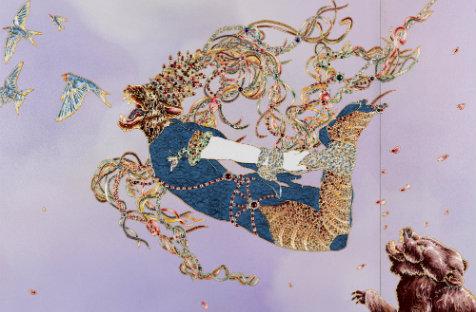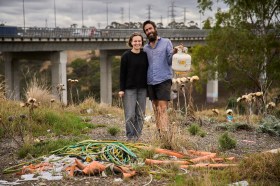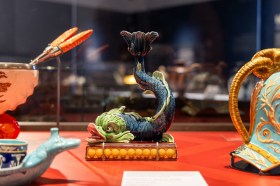This year the 7th Asia Pacific Triennial (APT7) of Contemporary Art celebrates its 20th anniversary; two decades of the only major exhibition series in the world to focus solely on the contemporary art of Asia, Australia, and the Pacific. But the Triennial is much more than just an exhibition of visually breath-taking and engaging artworks; it also aims to challenge viewers and raise questions regarding tradition, geography, culture, and belonging – and does so very successfully.
Many of the works exhibited this year at the APT engage with stories of courage, destruction, displacement and difference; others celebrate diversity but also act to progress viewers’ attitudes towards multiculturalism.
While visual art plays a major role in the APT7, the Triennial also includes two film programs, Mountains and Waters: Chinese Animation Since the 1930s (a milestone retrospective of Chinese animation including shadow plays, puppetry, and woodblock prints) and Change: Paths Through 20 Years of Film (featuring more than 80 films exploring the theme of ‘change’ over 20 years of film-making from Asia, Australia, and the Pacific). Floor talks, artist talks, and daily guided tours complement the Triennial, while Kids’ APT7 includes 13 interactive artworks and installations for children and their families. Also featured in the broad program is The 20-Year Archive, created in collaboration with APT artists and installed at the Queensland Art Gallery, and including installations, reinterpretations, and a collection of children’s drawings from Afghanistan, North Korea, Cambodia, Vietnam and Myanmar, Papua New Guinea, Indonesia, and Australia.
Perhaps the most striking works from the APT7 at the Gallery of Modern Art are the two co-curated projects from Papua New Guinea, including a large-scale installation of a spirit house built by the Brikiti Cultural Group of East Sepik, which dominates the GoMA foyer, and another intricately decorated spirit house created by seven Kwoma artists made up entirely of hand painted tiles and wood carvings. While these traditional structures have been reinterpreted to fit the size and scale of the site, the imagery, colours, motifs and designs included in the structures are unique to the religious and ceremonial traditions of the artists and their individual communities. It is works like these that truly enhance the APT, raising it from a collection of artworks to an institution that can instil a sense of awe and inspiration by enabling visitors to see things that are outside and above the visual imagery of their everyday lives.
Also exhibited in APT7 are the whimsical fantasy worlds of Raqib Shaw, from Kolkata, India. These large-scale works created from stained glass paint, rhinestones, glitter, and enamel are a visual feast; no corner of the works are without a touch of beauty and elegance. Shaw’s major work, which adorns the APT7 brochure, is Paradise Lost (2001-11), which took ten years to complete and is rich in narrative, colour and composition. Artist Tiffany Chung of Danang, Vietnam, also embeds narrative into her work, Roaming with the Dawn — Snow Drifts, Rain Falls, Desert Wind Blows (2012), comprised of 4,000 handmade glass animals travelling in a collective migration, to hint at the impact our lives are having on our fragile environment.
For Uji Handoko Eko Saputro (aka Hahan) of Kebumen, Central Java, the fickleness of the international art market and the highs and lows of life as an artist are key themes to be both explored and critiqued. By combining Javanese mythology with his own recognisable style inspired by street art and comics, Hahan’s work comments on the constant struggle to find success amidst growing networks of artists and galleries. Consumerism and greed are also highlighted in Hahan’s works, raising questions of art for art’s sake amidst the skyrocketing prices paid to ‘celebrity artists’.
The scope, quality, and atmosphere of the APT7 cannot be accurately described within a few mere paragraphs, and is certainly not something that can simply be seen; an event like no other in Australia, it must be experienced. The opportunity to see works from Asia, the Pacific and Australia that inspire, surprise, intrigue, and entertain should be embraced and remembered, and certainly not be missed.
The 7th Asia Pacific Triennial of Contemporary Art
Queensland Art Gallery and Gallery of Modern Art
8 December – 14 April





